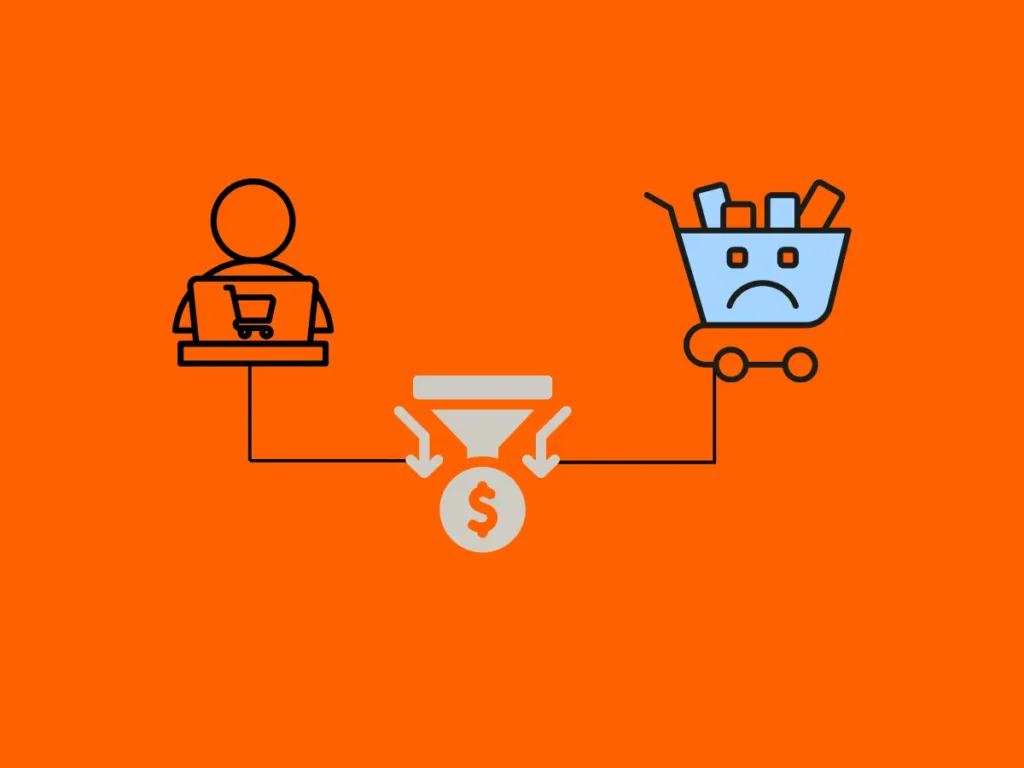
Have you ever wondered why customers add items to their shopping cart only to leave your website without completing their purchase? You’re not alone. Cart abandonment is one of the biggest challenges facing online retailers today, with studies showing that nearly 70% of shopping carts are abandoned before checkout completion.
But here’s the good news: cart abandonment isn’t just a problem, it’s an opportunity. When you understand why customers leave and implement the right strategies, you can recover lost sales and boost your eCommerce conversion rates significantly.
Understanding Cart Abandonment
Before diving into solutions, let’s talk about why cart abandonment occurs in the first place. The most common reasons include unexpected shipping costs, complicated checkout processes, security concerns, and simply browsing without immediate purchase intent. Understanding these pain points is crucial for developing effective abandoned cart recovery strategies.
10 Proven Ways to Reduce eCommerce Cart Abandonment and Increase Sales
Every click counts in online shopping, but nothing stings more than seeing a full cart left behind. Here are 10 proven ways to reduce eCommerce cart abandonment and keep your sales growing.
1. Simplify Your Checkout Process
One of the most effective ways to reduce cart abandonment is streamlining your checkout process. A lengthy, complicated checkout is like putting obstacles between your customers and their purchase decision.

Here’s what you can do:
- Reduce the number of checkout steps to three or fewer
- Offer guest checkout options alongside account registration
- Use progress indicators so customers know how many steps remain
- Enable autofill for returning customers
- Make form fields clearly labeled and easy to complete
Many successful eCommerce businesses have seen cart abandonment rates drop by 20-30% simply by optimizing their checkout flow. Remember, every extra click or form field is another chance for customers to change their minds.
2. Be Transparent About Total Costs
Nothing kills a potential sale faster than surprise fees at checkout. Cart abandonment often spikes when customers discover unexpected shipping costs, taxes, or handling fees that weren’t clearly communicated earlier.
Best practices for cost transparency:
- Display shipping costs early in the shopping process
- Use shipping calculators on product pages
- Offer free shipping thresholds to encourage larger orders
- Be upfront about taxes and additional fees
- Consider absorbing small fees into product prices
Studies show that unexpected costs account for nearly 60% of cart abandonment cases. By being transparent from the start, you build trust and reduce checkout surprises that lead to abandoned shopping carts.
3. Implement Strategic Cart Abandonment Email Campaigns
Email marketing remains one of the most powerful tools for recovering abandoned carts. A well-crafted email sequence can bring back 10-15% of customers who left without purchasing.

Effective abandoned cart email strategies:
- Send the first email within 1 hour of abandonment
- Create a series of 2-3 emails spaced over several days
- Include product images and details in your emails
- Add customer reviews and social proof
- Consider offering small incentives or discounts
- Use urgency tactics like limited-time offers
Your cart abandonment emails should feel helpful, not pushy. Focus on reminding customers about items they were interested in and address any concerns that might have caused them to leave.
4. Optimize for Mobile Shopping
With mobile commerce accounting for over 50% of online sales, cart abandonment on mobile devices is a critical issue to address. Mobile users face unique challenges that can increase abandonment rates.
Mobile optimization strategies:
- Ensure your checkout process works seamlessly on all devices
- Use large, thumb-friendly buttons and form fields
- Implement mobile payment options like Apple Pay and Google Pay
- Minimize typing required during checkout
- Test your site regularly on various mobile devices
The mobile cart abandonment rates are typically higher than desktops, making mobile optimization essential for reducing overall abandonment rates.
5. Build Trust and Address Security Concerns
Security concerns are a major factor in cart abandonment, especially for new customers unfamiliar with your brand. Building trust throughout the shopping experience is crucial for conversion optimization.
Trust-building elements to include:
- Display security badges and SSL certificates prominently
- Include customer testimonials and product reviews
- Show clear return and refund policies
- Provide multiple contact options and customer support
- Use professional website design and high-quality product images
- Display trust signals like “Verified by” badges
When customers feel secure about sharing their personal and payment information, they’re much more likely to complete their purchase instead of abandoning their cart.
6. Use Exit-Intent Popups Strategically
Exit-intent technology can detect when users are about to leave your website and trigger targeted pop-ups. When used correctly, these can be effective for reducing cart abandonment without being intrusive.
Effective exit-intent strategies:
- Offer a small discount or free shipping
- Collect email addresses for follow-up marketing
- Address common objections or concerns
- Provide live chat support options
- Show customer testimonials or reviews
The key is timing and relevance. Your exit-intent popups should provide genuine value and address reasons why customers might be hesitating to complete their purchase.
7. Provide Multiple Payment Options

Limited payment options can be a significant barrier to purchase completion. Offering variety in payment methods can reduce cart abandonment by accommodating different customer preferences.
Payment options to consider:
- Major credit cards (Visa, MasterCard, American Express)
- Digital wallets (PayPal, Apple Pay, Google Pay)
- Buy now, pay later services (Klarna, Afterpay)
- Bank transfers or direct debit
- Cryptocurrency payments (where appropriate)
The more payment flexibility you offer, the less likely customers are to abandon their carts due to payment limitations.
8. Implement Live Chat and Customer Support
Sometimes customers have questions or concerns that prevent them from completing their purchase. Providing immediate support can address these issues and recover potentially lost sales.
Support strategies that reduce cart abandonment:
- Add live chat functionality to your checkout pages
- Train support staff to handle purchase-related questions
- Create comprehensive FAQ sections
- Offer phone support during business hours
- Use chatbots for common questions outside business hours
Quick, helpful customer support can be the difference between a completed sale and cart abandonment.
9. Create Urgency and Scarcity (Ethically)
Psychological triggers like urgency and scarcity can motivate customers to complete their purchases rather than abandoning their carts. However, these tactics must be used honestly and ethically.
Ethical urgency and scarcity tactics:
- Show real inventory levels when items are genuinely low in stock
- Use countdown timers for legitimate sales or promotions
- Highlight when items are popular or trending
- Show how many people are viewing the same product
- Create limited-time offers that provide real value
The key is authenticity. False scarcity tactics can damage your brand reputation and customer trust in the long run.
10. Analyze and Optimize Continuously
Reducing cart abandonment is an ongoing process that requires constant monitoring and optimization. Use analytics tools to understand your specific abandonment patterns and test different solutions.

Analytics and optimization strategies:
- Track abandonment rates at different checkout stages
- Use heat mapping tools to identify problem areas
- A/B test different checkout designs and flows
- Monitor the performance of your abandoned cart emails
- Survey customers about their shopping experience
- Regularly review and update your strategies
Data-driven decisions will help you identify the most effective ways to reduce cart abandonment for your specific audience and business model.
Measuring Success: Key Metrics to Track
To know if your cart abandonment strategies are working, you need to monitor relevant metrics:
- Overall cart abandonment rate
- Email recovery rate from abandoned cart campaigns
- Conversion rate improvements after implementing changes
- Average order value changes
- Customer lifetime value improvements
- Mobile vs. desktop abandonment rates
Regular monitoring helps you understand which strategies provide the best return on investment and where to focus your optimization efforts.
Frequently Asked Questions (FAQs)
Final Thoughts
Reducing cart abandonment requires a comprehensive approach that addresses the various reasons customers leave without purchasing. By implementing these strategies and continuously optimizing based on your data, you can significantly improve your conversion rates and recover revenue that would otherwise be lost.
Remember, every recovered abandoned cart is not just a sale, it’s a step toward building a better customer experience that encourages repeat purchases and long-term loyalty. To explore how these strategies can work for your business, book a free discovery call, and let’s create a plan to keep more customers coming back.





